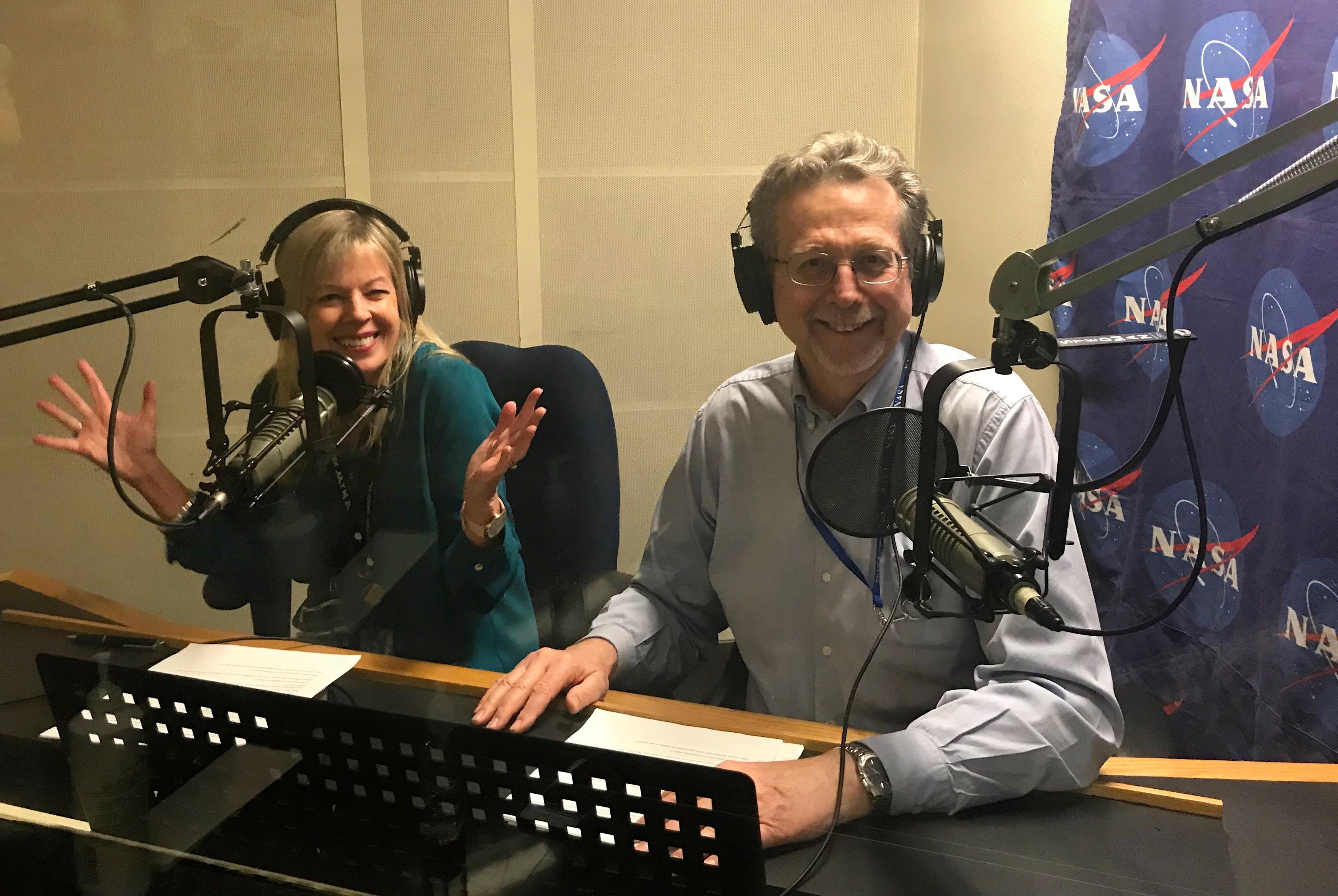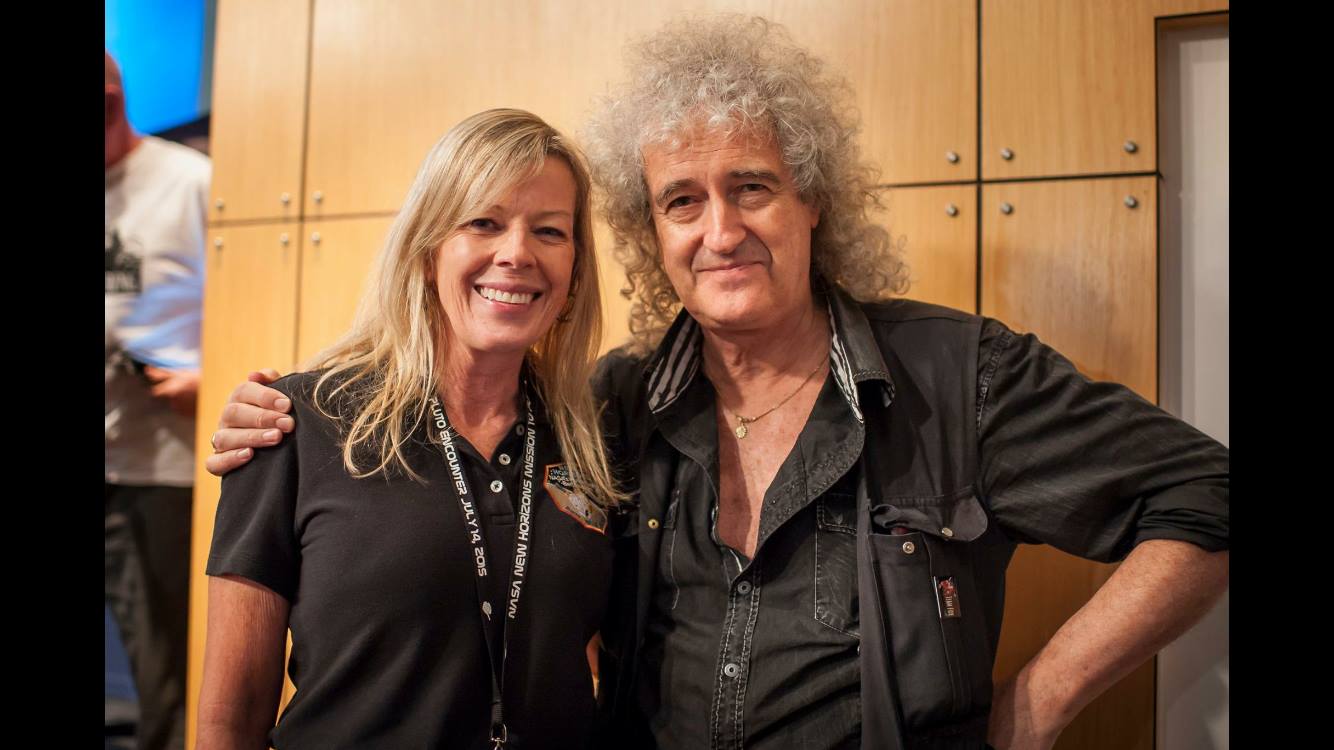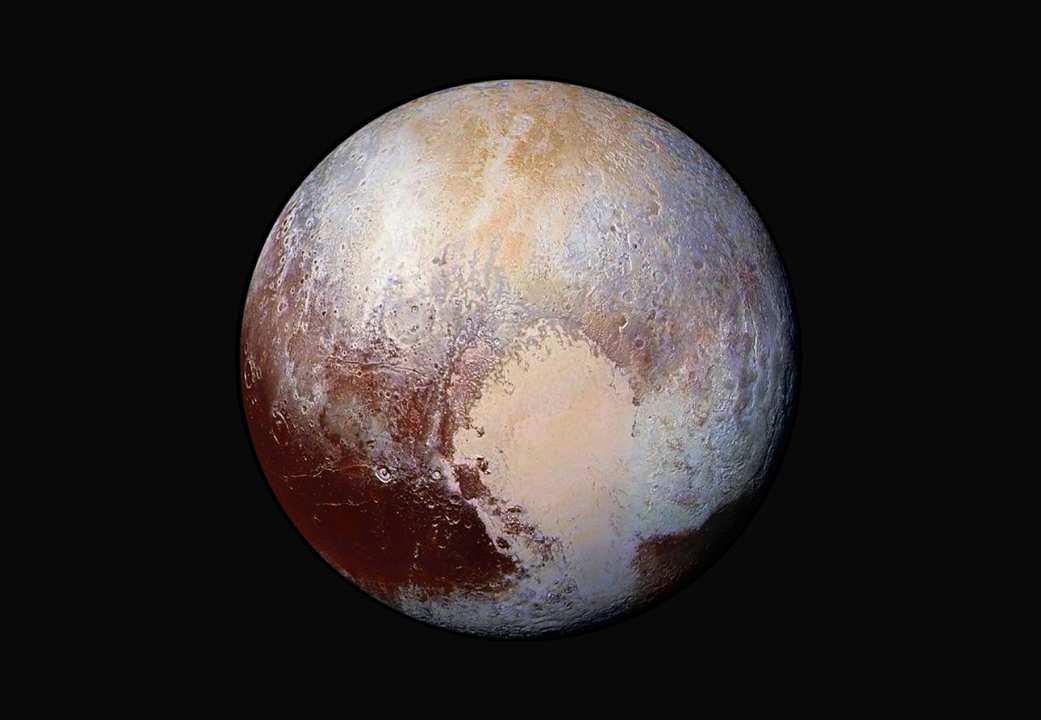
Laurie Cantillo
Special Projects & Web Modernization - NASA's Jet Propulsion Laboratory (JPL)
Douglas County High School, Castle Rock, CO
University of Colorado
Journalism
My dad was a geologist who loved the outdoors and shared that with me. I was a tomboy growing up, spending most of my time hiking, camping, fishing, rock collecting, horseback riding, and chasing butterflies. My dad used to joke that I spent so much time outside I didn't have the sense to come in out of the rain. I took all the science classes I could in middle school and high school. In college, one of my favorite classes was astronomy, which merged my love of space and photography. I would spend overnights at the planetarium capturing images of the Moon, galaxies and nebulae.
After a long career in radio and TV news, I was drawn back to science by my youngest son, David, who was obsessed. David mowed lawns all one summer to buy his first telescope. I would join him for many nights of stargazing and meteor spotting. We went to science centers, NASA Goddard, and made countless visits to the National Air & Space Museum. We spent an evening with the telescopes at Kitt Peak in Arizona, which led to two summers of astronomy camp there. As his interest grew, so did mine. So I really have him to thank for planting the idea of working at NASA.

I had worked for decades in news and talk radio, and I was getting weary of covering mostly bad news: crime, mass shootings, racial tensions, and political gridlock. One day David – then a teenager – said, "Mom, you should work at NASA." I sent a resume to NASA's Office of Communications in Washington. As luck would have it, it was the same day the agency realized it needed help with the upcoming New Horizons flyby of Pluto. In a short time, I became the embedded writer and public affairs officer for the mission, working marathon hours with an incredible science team. It was both exhausting and exhilarating. I feel privileged to have shared in the experience of seeing humankind's first images of that strange and wondrous place. My small contribution was seeing the bright spot on Pluto and dubbing it the "heart," which exploded on social media. There were memes everywhere; Pluto captured the imagination of people all over the world. Kids wrote letters about how much they loved Pluto. For me, it was "love at first mission."
I work with a team of the best science communicators in the world. NASA is charged with telling our story to the widest possible audience, and we look to connect with diverse audiences in numerous ways: through video, social media, print products, graphics, art, and music. My current project is to help NASA Science modernize its web footprint—to create a website that is not only visually stunning but as bold, innovative, and accessible as NASA is.
My hope is that our work will improve science literacy, inspiring people to protect our home planet while seeking answers to fundamental questions like: Where did we come from? What is our destiny? Are we alone?

Don't assume that you need to be a genius in math or science to work at NASA. We need all hands on deck and a variety of skills to succeed. Apply for internships so you can get hands-on training and find your passion. We've had people who started as interns at JPL and never left.
I was a single mom with four kids when a mammogram revealed I had breast cancer. My kids ranged in age from an infant to age 12, and I was their sole provider. Fortunately, the cancer was detected early and I made a full recovery. But that experience taught me several things: never take your health for granted, make every day count, surround yourself with people who make you feel good about yourself, and don't sweat the small stuff.
My "shero" is Dr. Maya Angelou. As a girl, I read and wrote a lot of poetry and her poems were my favorites. She rose above the barriers that come with being a woman and a person of color to become one of the most inspiring writers of our time. I had the privilege of working with Dr. Angelou on the "Oprah & Friends" satellite radio channel. One of the highlights of my life was joining her for a private dinner at her home in North Carolina, and she did the cooking! There were only three of us. It was a magical evening...unforgettable.
The New Horizons Pluto mission, the Cassini end of mission at Saturn, the Perseverance landing on Mars, and developing the first podcast for NASA HQ called "Gravity Assist." I also worked with The Rolling Stones and Robert Downey, Jr. on a project to name a rock on Mars after the band, which was an experience of a lifetime.
I grew up in Colorado and have climbed all but a handful of the 14,000-foot peaks. I had to be helicoptered off one peak after getting caught in a rockslide. I've finished a couple of marathons and was at one time an accomplished trail runner. I’m a big believer in giving back, so in my “free time” I drive a water truck for a humanitarian group, volunteer for the Audubon Society, and mentor students who are interested in careers in journalism and communications.
Most people expected Pluto to be a rather boring and cratered rock, but instead, it revealed itself to be a wondrous place: with mountains, an exotic ice "heart," and even an atmosphere. It speaks to why we explore – it's not what we expect to find, it's the unexpected. Discovery unites and brings out the best in us.

